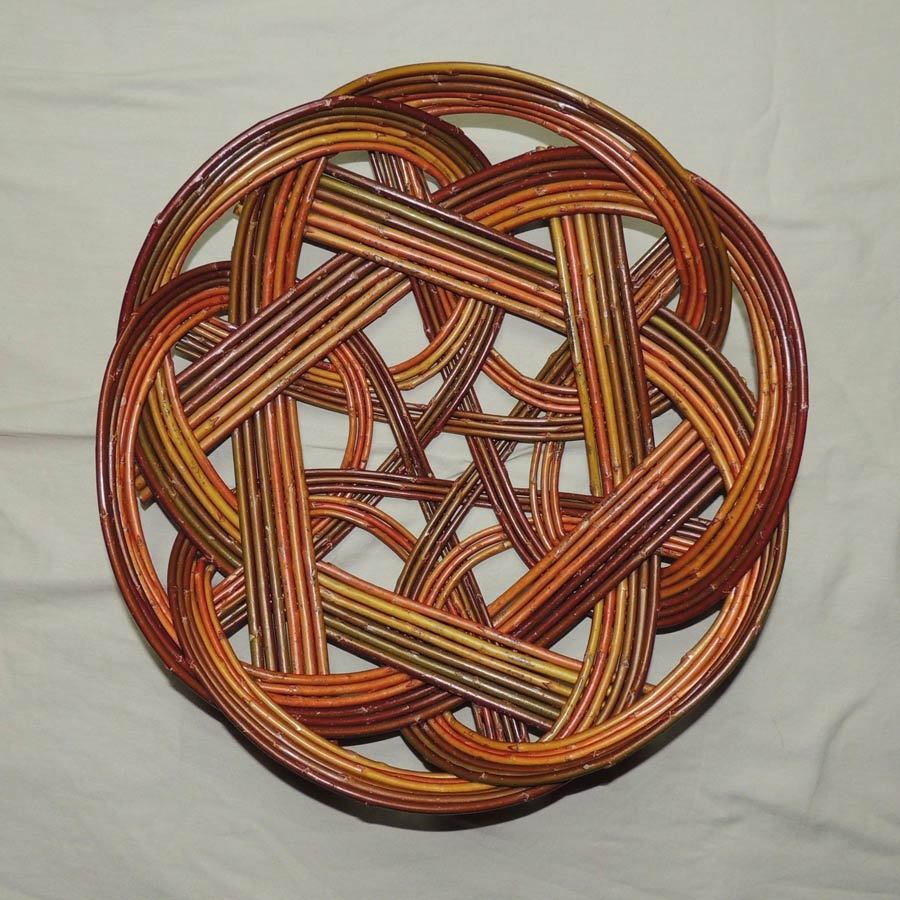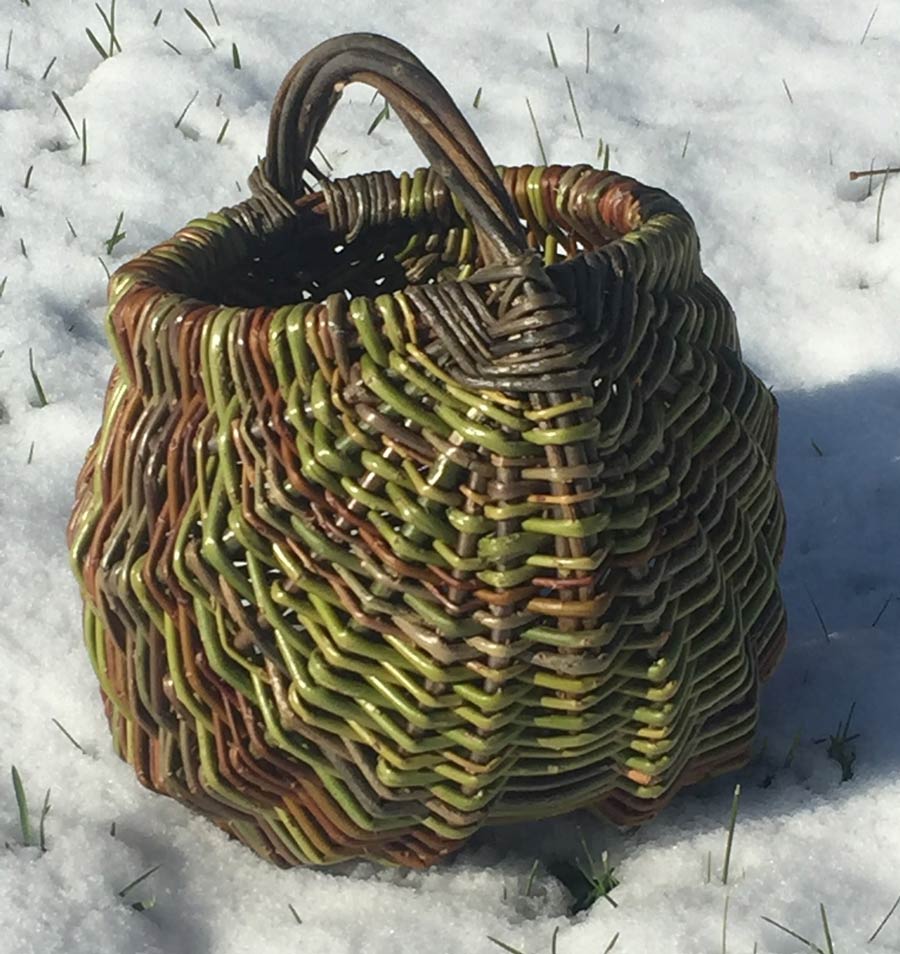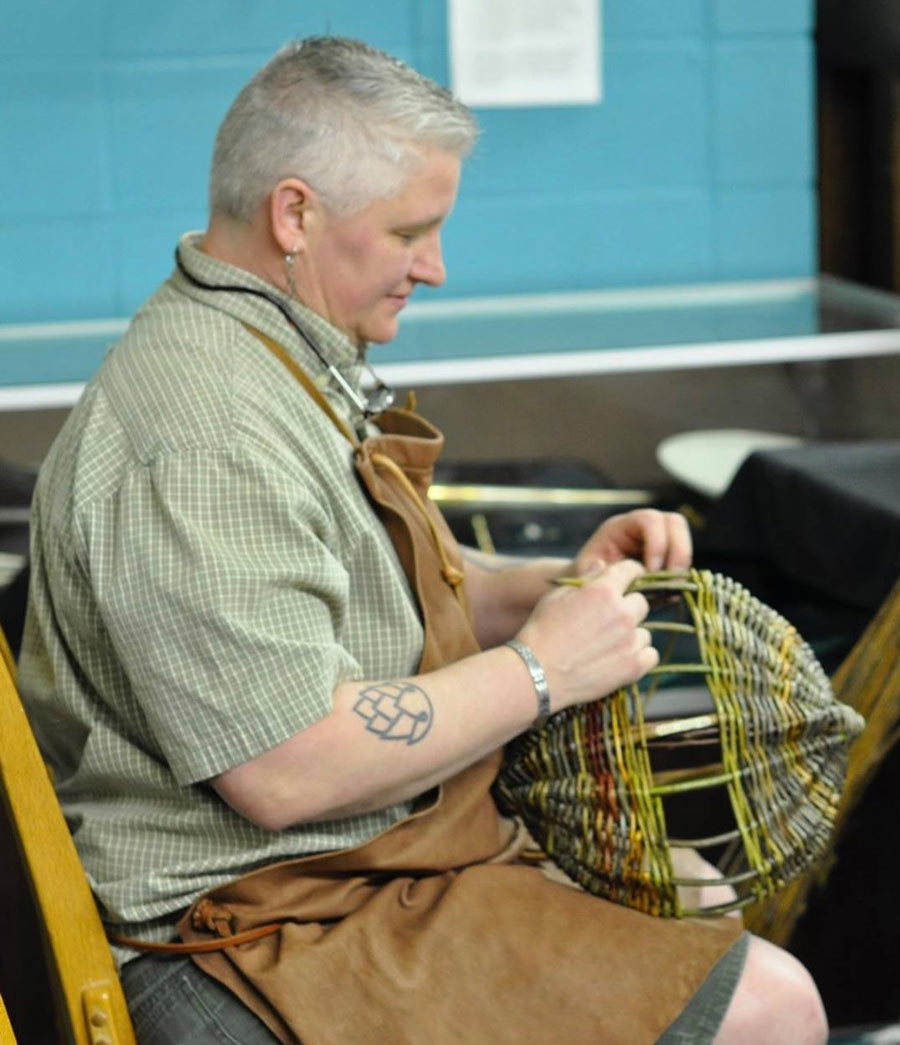“My main medium is willow basketry, which is classified as folk art. It can be traced back to my great-grandfather who came to the Dakota territories in 1874. In the prairie, willow was pretty much the only wood source there was for a while until people started planting trees. Willow wasn’t just for basketry. My grandfather learned how to weave, but that was around the time that metal buckets started coming out. So why would you spend hours weaving when you could just go and spend a hard-earned nickel on a bucket?
When my father was 10 years old, my great-grandfather said, ‘You’re old enough to learn this,’ and taught him. My father got busy with school and life and didn’t pick it up again until he was almost retired. That was about 1976, which was also when I became curious and learned how to do it.
As far as styles go, obviously, I just learned a traditional, very utilitarian work basket kind of thing, like egg baskets or laundry baskets – something that is definitely useful. In recent years, I expanded into different styles and baskets that might be more pretty than useful. But still, I like to stick with functional.
In 2009, my father won the National Endowment of the Arts Heritage Fellowship Award, which is the highest honor any folk artist can achieve. The celebration and awards ceremony was in Washington DC. I went to that. Up to that point, I had not experienced the level of validation of the art of basket weaving. Seeing my father receive that honor was a real awareness point in my life that was very inspirational. It really helped me keep going.
Let’s face it, there’s a lot of baskets out there. You can go to any thrift store and see a whole box of baskets for a dollar apiece. And it just breaks my heart because every single one of those baskets was made by hand by someone because there is no such thing as a machine-made basket. That’s the point I try to drive home: It’s not easy. It’s an art form. Even if it’s not an art form, it’s a highly valuable skill, especially in certain countries that don’t have access to metal or plastics.
I settled in Goshen and didn’t even weave that much the first few years. I was going to temporarily take over a vacant spot at the Farmers Market, and that turned into having a regular spot there and getting the word out. Also at that time, I got connected with folklorist Jon Kay and got connected with Traditional Arts Indiana through Indiana University. I describe having a folklorist as kind of like having an agent – he gets me demonstration gigs. The first time I demonstrated for money, it just blew my mind, like ‘People are going to pay to watch me weave?!?’ It’s awesome, and then I realized there are a group of people who are actually interested in that.
I love Goshen, and Goshen has always been the most wonderful supporter of arts of all kinds. People realize the work that goes into any kind of art, whether it be performance or craft or whatever, and are not balking at the price you put on things. And if they do, that’s fine. They don’t have to buy it.”




